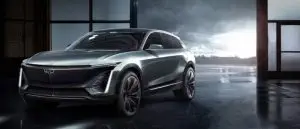Despite anemic sales and despite losing money on every battery-electric vehicle they sell, mainstream automakers are forging ahead. Here’s why, and here’s what’s needed for them to be successful.
 For Ford, such thinking represents a major strategy shift. Only eight years ago, the company rolled out the Ford Focus Electric, a hatchback with a tiny 23 kWh battery and a meager 76-mile driving range. Sales were disappointing, but not unexpected. In retrospect, Cannis said, their approach was understandable, given the cost, the limited capabilities of the time, and the knowledge that they would be losing money. “Part of the thinking was, ‘it’s a compliance play,’” he said.
For Ford, such thinking represents a major strategy shift. Only eight years ago, the company rolled out the Ford Focus Electric, a hatchback with a tiny 23 kWh battery and a meager 76-mile driving range. Sales were disappointing, but not unexpected. In retrospect, Cannis said, their approach was understandable, given the cost, the limited capabilities of the time, and the knowledge that they would be losing money. “Part of the thinking was, ‘it’s a compliance play,’” he said.
Now, however, that’s changed. For the as-yet-unnamed BEV that will be unveiled late this year, Ford engineers have taken a different tack. They built atop the Mustang name, added a big battery with a 300-mile range, employed a popular crossover form factor, and trotted out their chairman to let the world know that the new vehicle would “go like hell.”
Leave a Reply